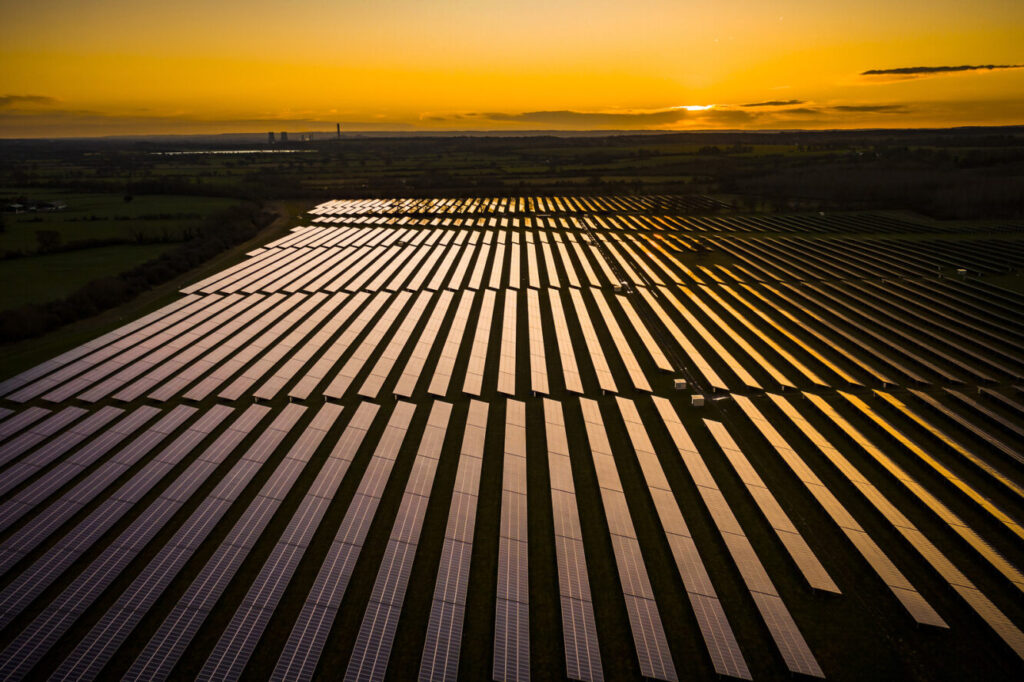Enthusiasm builds for nuclear
From boardrooms at Microsoft and Meta, to Washington DC and state capitals around the country, nuclear energy has seen a resurgence in enthusiasm in recent years.
The emergence of new nuclear technologies, growing concerns about the impact of carbon emissions-driven climate change, and projections for strong demand growth through the end of the decade in North America have all stoked interest in returning to a nuclear future that the US largely walked away from more than 30 years ago. Russia’s 2022 invasion of Ukraine was another catalyst, crystalizing the importance of energy independence.
But while many infrastructure investors share the exuberance for nuclear’s potential, massive up-front capital paired with uncertainty around project costs, construction, and permitting remain major barriers for infrastructure funds and project finance banks to fit nuclear assets into their investment models, experts tell Infralogic.
A checkered history
“The challenge is there are so few examples in the West in the last couple of decades,” says Sam Meyers, a senior VP at Brookfield. “And the examples we do have haven’t gone swimmingly.”
Nuclear energy projects require investors to put significant capital at risk prior to final investment decision (FID). And the track record for nuclear energy projects is one of years-long project delays and multi-billion-dollar cost overruns. Meanwhile, promises that new technologies will lower costs and improve predictability for project timelines are counterweighted by the very fact that those technologies are largely unproven at commercial scale, experts said.
Until some of those dynamics change significantly, sources tell Infralogic they expect funding for a US nuclear buildout to come from outside traditional infrastructure funds and traditional banks to shy away from project finance. But while infra funds may not be the first movers in the space, they might not be far behind once one or two deals get done.
Big needs, big potential
A growing “sense of urgency” to meet eye-popping energy needs for hyperscaler cloud services providers has been a key driver of the renewed enthusiasm for nuclear energy. Microsoft’s USD 1.6bn commitment to repower Constellation’s Three Mile Island nuclear plant in Pennsylvania and a 20-year commitment by Meta to purchase the output of Constellation’s Clinton nuclear facility in Illinois, displayed a willingness by cash-flush tech companies to make major commitments to suppliers of dispatchable energy, and confidence in the potential for nuclear energy to serve the needs of massive data centers.
Meanwhile, policymakers at both the federal and state level have pledged significant policy support for nuclear energy. New York and New Jersey have both indicated they will prioritize adding nuclear capacity to their grids as they seek to meet ambitious targets to decarbonize their energy sectors.
In Washington, nuclear energy enjoys largely bipartisan support, a fact that likely helped maintain Biden-era incentives under the GOP’s recently passed budget bill, while tax credits for wind and solar were shuttered.
Michelle Urben, managing and general partner at the Synergos Fund, told Infralogic that policy support will serve as a major tailwind for the nuclear sector, and lead to new and different opportunities for investment.
Synergos, an infrastructure fund focused on emerging technologies, is the lead investor in Curio, a nuclear fuel recycling business.
“The Trump Administration has promised to put its weight behind nuclear and, while there is some uncertainty about where, when, and how this will happen, the fact is… it’s happening,” Urben said.
A tough fit
But for investors with a more traditional infrastructure fund profile, none of those reasons for optimism mitigate the risks that put the sector largely outside their reach, says Brookfield’s Meyers, who oversaw the asset manager’s investment in Westinghouse Electric Company.
Westinghouse’s technology is present in around 50% of the global nuclear fleet, and the business provides fuel and services to around two-thirds of operating plants. Meyers said those operating plants and the global industry’s reliance on its fuel and services technologies provide revenue streams that limited the downside risks for Brookfield’s investment.
But an investment in a new-build reactor would be a much higher mountain to climb, he says. The last new reactors brought online in 2023 at Georgia Power’s Vogtle plant were brought into service seven years late and USD 17bn over budget. On top of that, a relative dearth in nuclear development in North America in recent decades makes it impossible to distinguish what overruns should be considered typical, rather than one-offs. That makes it challenging to price the risk on such projects, says Meyers.
“Where the struggle is today in the infrastructure space on these new reactor deployments is that folks don’t even feel like they have a great conception of how much risk there really is,” Meyers says. “So, it’s hard to figure out what type of reward you want.”
The next wave of nuclear projects is expected to mostly come in the form of small modular reactors, or SMRs. These require less capital than traditional nuclear plants and may be easier for investors to wrap their head around, Meyers notes. On the other hand, the technology has not been commercialized, and these projects are only considered “small” relative to the multi-gigawatt nuclear power plants of previous generations – the projects still require hundreds of acres of land to build.
The financing challenges are not limited to just the complexity and magnitude of multi-billion-dollar construction and long-term financing, notes Ted Brandt, the CEO of Marathon Capital. Substantial at risk, pre-FID capital must be invested before a project even gets to that point, including costs related to acquiring land, permitting, engineering, and deposits. Those costs can rise as high as USD 500m prior to full financing, Brandt said. A project can be squashed by the US Nuclear Regulatory Commission or local permitting, after hundreds of millions of at-risk capital has been advanced.
This risk may be justified given the USD 10bn or higher cost of a nuclear project, but the capital will be difficult to source, Brandt explains.
“This development capital will probably not come from traditional infrastructure investors,” Brandt says. “It will instead probably come from high-net-worth individuals, family offices, and other growth investors who will accept binary risk in return for a strong chance at receiving high multiples on their investment.”
“We’ve been in front of most of the larger infrastructure investors in the world and have found little appetite for pre-FID risk capital,” he added. “Traditional infrastructure investors will almost certainly be investors in new SMR and nukes, but few have capacity for pre-FID risk capital.”
Infra investors, meanwhile, say they are following developments in nuclear power but are not close to pulling the trigger on deals in the space.
“As a conceptual matter, nuclear should be increasingly interesting given projected growth in power demand and rising political acceptability,” Tiger Infrastructure Partners founder and CEO Emil H. Henry Jr. said in an email. “Yet cost, regulatory constraints, and time to market continue to be substantial and typically insurmountable headwinds.”
Jocelyn Lavallo, a partner with Foley & Lardner’s energy and infrastructure practice who focuses on project finance, said banks and infrastructure funds will need to see that advanced nuclear projects can be brought online within at least shouting distance of their budgets before they are ready to commit to the sector.
“Until we see a nuclear project that comes in within at least 20%-25% of its budget and timeline, I think that’s a prerequisite for banks to have any kind of interest in this,” Lavallo said.
In the long run, Marathon’s Brandt is bullish both on nuclear and on infrastructure investors eventually playing a significant role.
“I’m telling everybody that will listen that inside of 10 years, there’s going to be 100 GW of nukes emerging across the US,” he says, adding that it may even create a glut of power instead of a shortage. “But it’s going to take financing skills and capital skills that this market will need to develop. We are appreciative of the current administration’s positive bias toward nuclear and hopeful that the DOE will help somehow on early-stage capital formation as well as permitting reform, which might shave years from today’s ten-year timelines.”
Money up Front
As nuclear energy has returned to vogue in North American, the sector has not been entirely quiet elsewhere. Canadian public pension manager La Caisse (formerly CDPQ) this month announced plans to send GBP 1.7bn (USD 2.27bn) across the Atlantic to support development of the 3.2 GW Sizewell C nuclear power station in the United Kingdom. A La Caisse representative confirmed that commitment is coming from the institutional investor’s infrastructure portfolio. Bill Gates-founded Terra Power in June announced a USD 650m fundraise. SMR developer Turquoise Power is reportedly seeking an initial USD 200m in equity investment to support a nuclear project in the Midwestern US with a USD 10bn capex. And Brookfield Renewable Partners, back in 2022, partnered with Cameco to acquire Westinghouse.
Brookfield is not the only firm to invest in technology or services companies in the nuclear space. Energy Impact Partners, a technology investor focused on energy transition, has invested in a handful of nuclear technology firms including Elementl Power, Zap Energy, and Atomic Canyon.
But, with the possible exception of some opportunities to support brownfield re-powering projects like the one envisioned for Three Mile Island, most experts interviewed by Infralogic said they see few opportunities for infrastructure funds or traditional project finance banks to get involved with new build generation projects, until the opportunities are de-risked.
Foley & Lardner’s Lavallo said she thinks it will likely be into the 2030s, with at least one major project success, before traditional banks get fully on board with project finance for nuclear generation. And even then, they likely won’t get involved until the later stages of development.
Public support, strategic investors, or large investments from private sources like big tech companies will have to get projects to the EPC stage first, she said.
“Once there’s an EPC contractor with full wrap, and that’s guaranteed by the federal government, I think that’s when banks will start getting involved,” she said.
Nuclear energy is certainly top of mind for the industry. At the Reuters Global Energy Transition Conference last month, investors discussed the need for new nuclear power. But private sector investment, at least from infrastructure investors, was not imminent.
“They need to have cost decline such that you can have appetite at a low cost to take the risk,” said Samuel Scroggins, a managing director in Lazard’s global power, energy, and infrastructure group. “Or they need to have frameworks, policy, market or otherwise around that, that encourages investors to put capital at risk to see them be built.”











